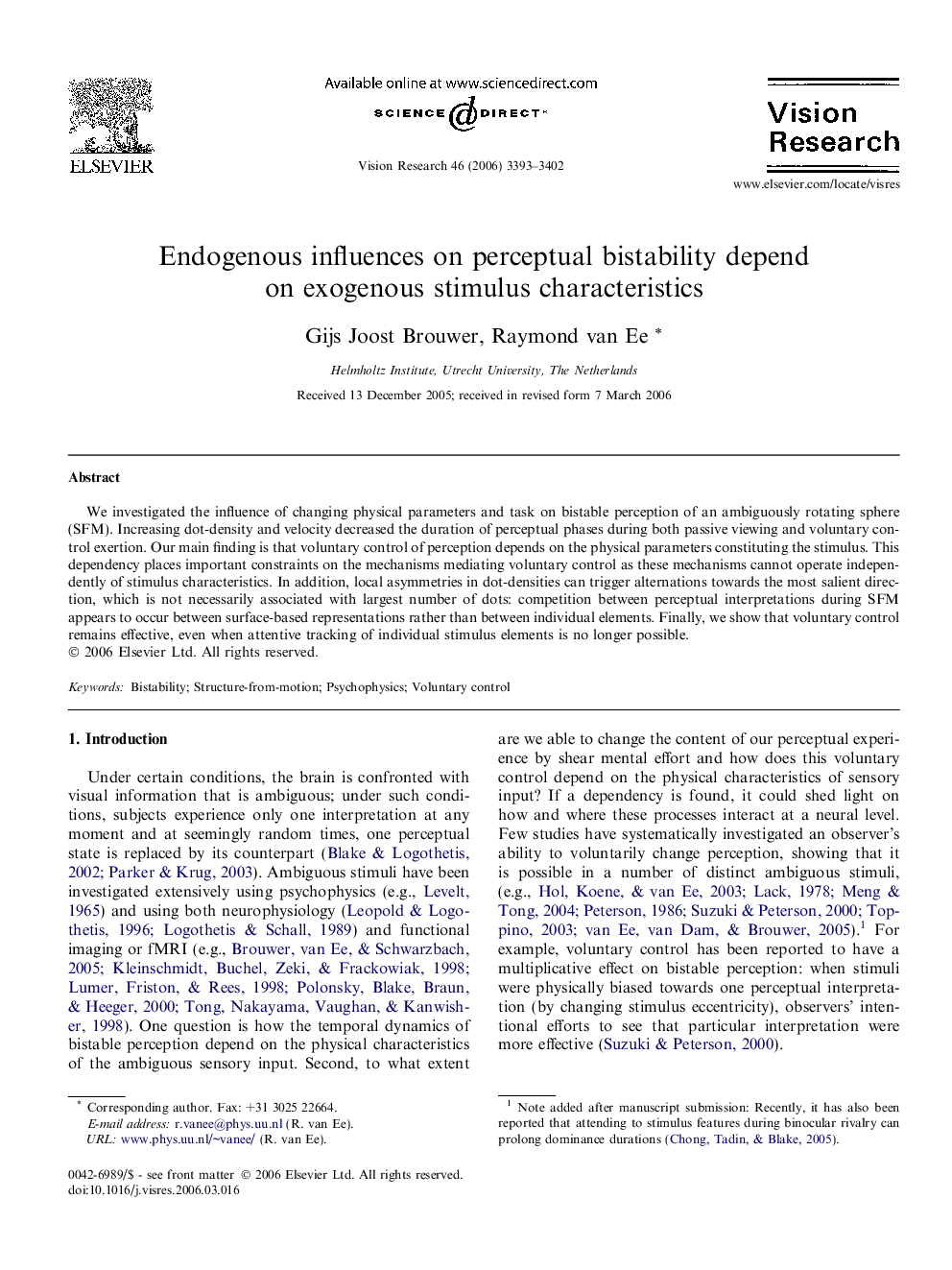| Article ID | Journal | Published Year | Pages | File Type |
|---|---|---|---|---|
| 4035987 | Vision Research | 2006 | 10 Pages |
We investigated the influence of changing physical parameters and task on bistable perception of an ambiguously rotating sphere (SFM). Increasing dot-density and velocity decreased the duration of perceptual phases during both passive viewing and voluntary control exertion. Our main finding is that voluntary control of perception depends on the physical parameters constituting the stimulus. This dependency places important constraints on the mechanisms mediating voluntary control as these mechanisms cannot operate independently of stimulus characteristics. In addition, local asymmetries in dot-densities can trigger alternations towards the most salient direction, which is not necessarily associated with largest number of dots: competition between perceptual interpretations during SFM appears to occur between surface-based representations rather than between individual elements. Finally, we show that voluntary control remains effective, even when attentive tracking of individual stimulus elements is no longer possible.
